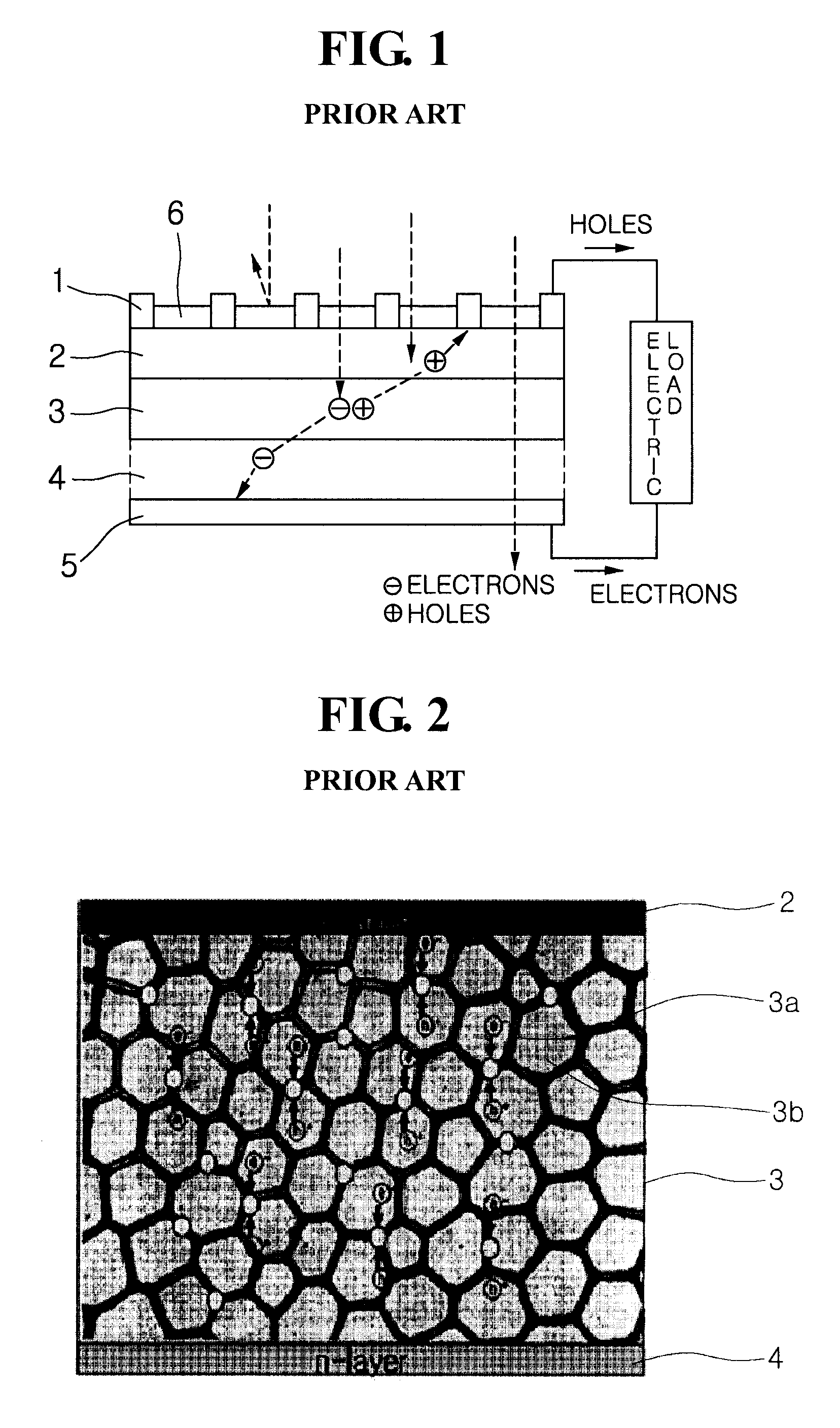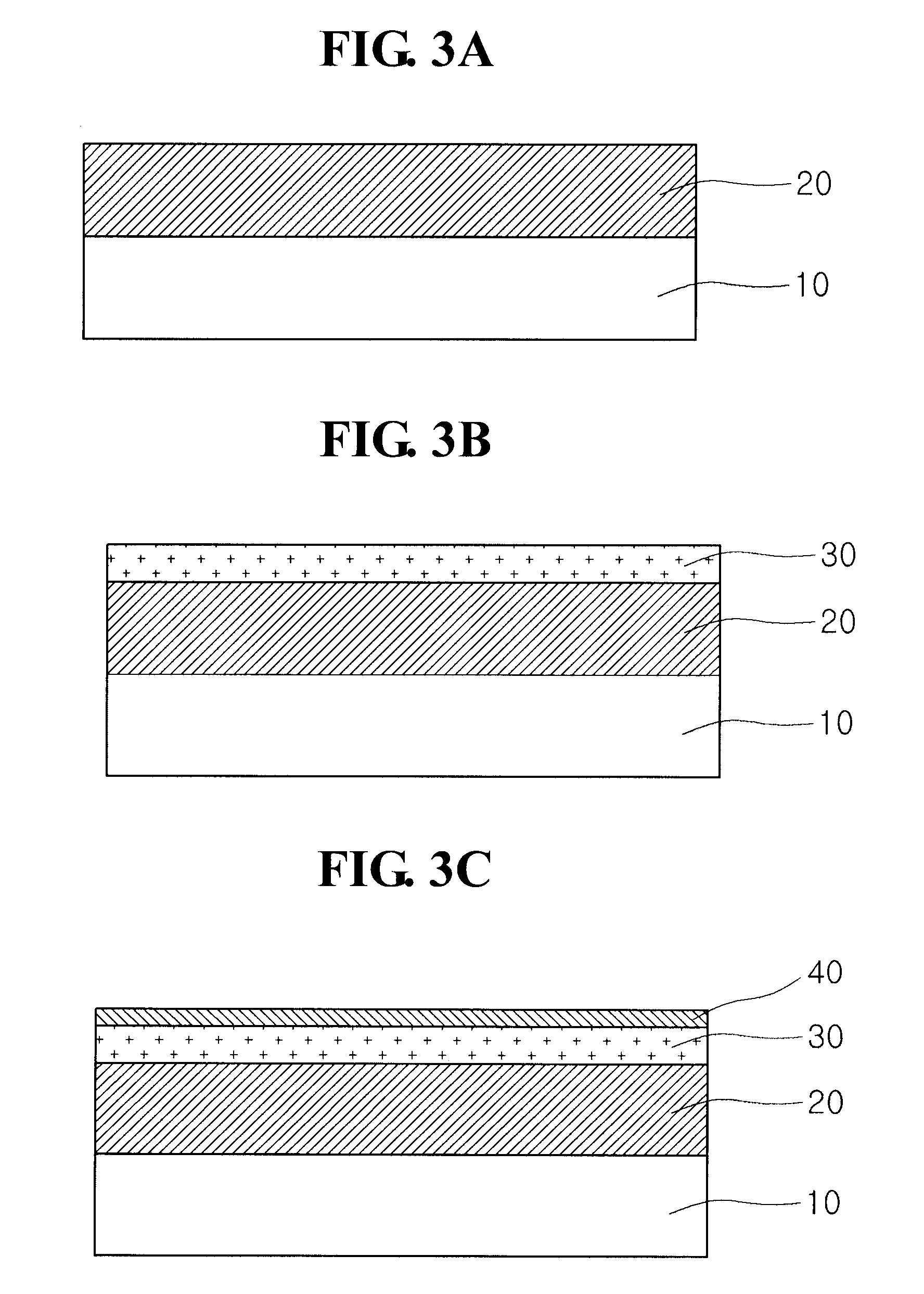Polycrystalline silicon solar cell having high efficiency and method for fabricating the same
a solar cell and polycrystalline silicon technology, applied in the field of polycrystalline silicon solar cells, can solve the problems of low efficiency, reduced production cost, and inability to manufacture solar cells having a thickness of 300 m or less, and achieve the effect of high efficiency
- Summary
- Abstract
- Description
- Claims
- Application Information
AI Technical Summary
Benefits of technology
Problems solved by technology
Method used
Image
Examples
Embodiment Construction
[0047]Various objects, advantages and features of the invention will become apparent from the following description of embodiments with reference to the accompanying drawings.
[0048]Hereinafter, a preferred embodiment of the present invention will be described in detail with reference to the attached drawings.
[0049]Reference now should be made to the drawings, in which the same reference numerals are used throughout the different drawings to designate the same or similar components.
[0050]FIG. 3K is a sectional view showing a polycrystalline silicon solar cell according to an embodiment of the present invention.
[0051]The polycrystalline silicon solar cell according to an embodiment of the present invention includes: a back electrode 20 formed on a transparent insulating substrate 10; an N-type polycrystalline silicon layer 30b, which is formed on the back electrode 20, in which amorphous silicon is crystallized through a metal induced crystallization (MIC) process, and in which electr...
PUM
 Login to View More
Login to View More Abstract
Description
Claims
Application Information
 Login to View More
Login to View More - R&D
- Intellectual Property
- Life Sciences
- Materials
- Tech Scout
- Unparalleled Data Quality
- Higher Quality Content
- 60% Fewer Hallucinations
Browse by: Latest US Patents, China's latest patents, Technical Efficacy Thesaurus, Application Domain, Technology Topic, Popular Technical Reports.
© 2025 PatSnap. All rights reserved.Legal|Privacy policy|Modern Slavery Act Transparency Statement|Sitemap|About US| Contact US: help@patsnap.com



